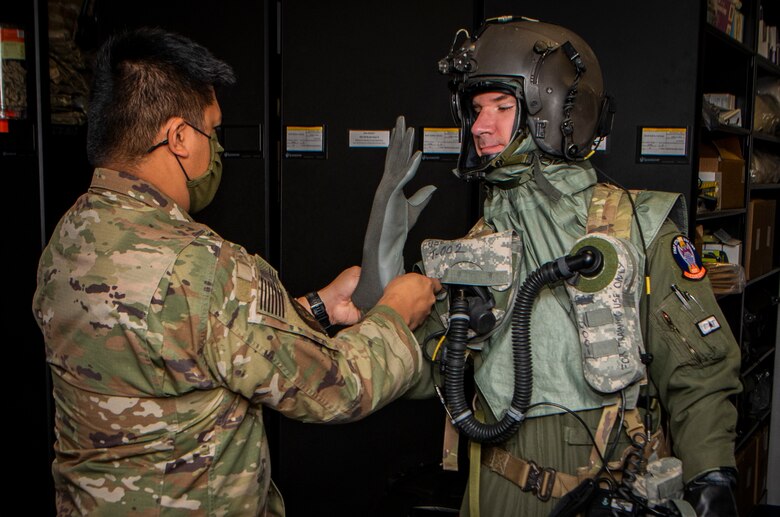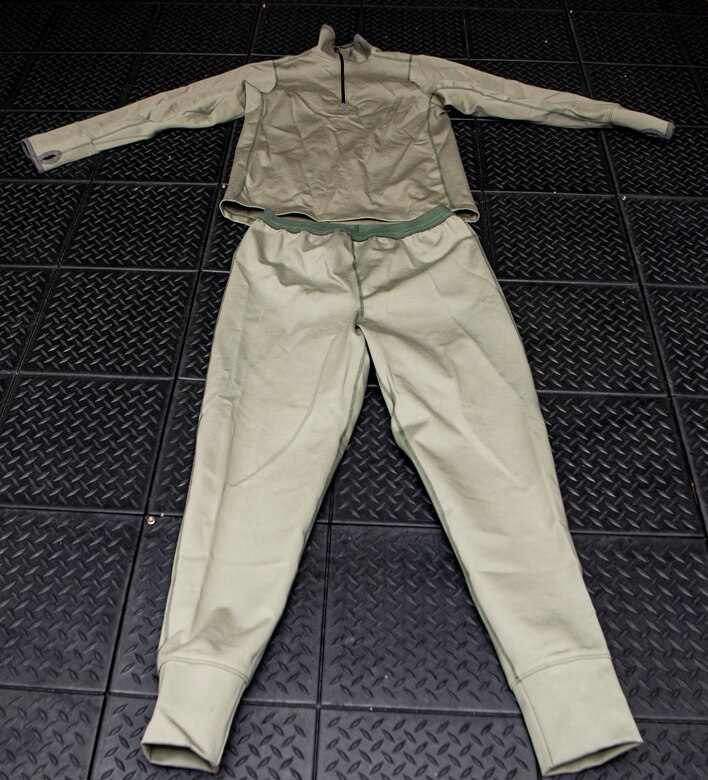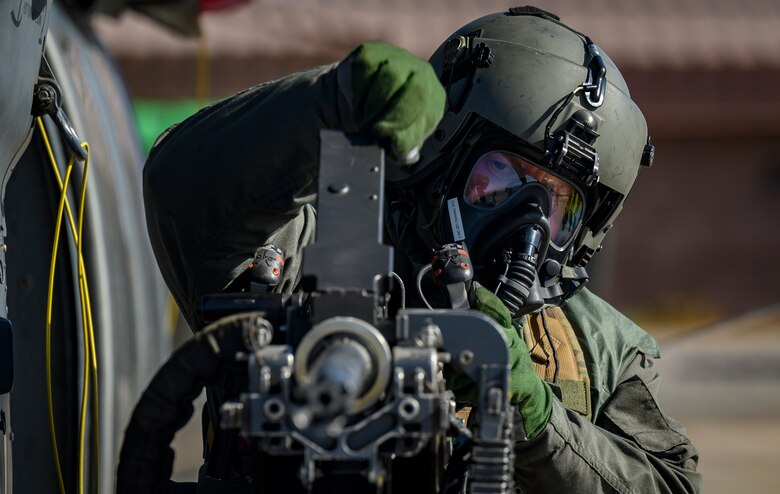Representatives from across the Department of Defense in conjunction with the 88th Test and Evaluation Squadron participated in ongoing developmental testing of the new Uniform Integrated Protective Ensemble, or UIPE, Air system at Nellis Air Force Base.
UIPE Air is a layered clothing system - gloves, respirator, undergarments, etc. - that provide chemical, biological, radiological and nuclear protection to air crews in a toxic environment.
The new system will update CBRN defense for aircrews, replacing the current 66P legacy system.
Once approved, it will be fielded to all air crews across fixed wing, rotary wing, ejection seat and large frame aircrafts across the DoD.
"This item will service air crews for the U.S. Navy, Marine Corps, Army and Air Force, so our testing phase is critical," said 2nd Lt. Gunnar Kral, Air Force Life Cycle Management Center, AF CBRN Defense Systems Branch systems engineer.
The new system is a two-piece undergarment that is lighter, offering better mobility, and is more breathable, which lowers the thermal burden on warfighters. With this, air crews will be able to stay in the suit longer and do their jobs with less heat burden or chances of heat casualties.
"Moving to an under layer, allows air crews to use an outer layer they're more familiar with, like their flight suits," said 1st Lt. Hunter Mangueira, AFLCMC, AF CBRN Defense Systems Branch systems engineer. "We're trying to make CBRN flight equipment similar to the flight crews regular mission set equipment, removing the learning curve and any hindrance when they conduct their missions."
During this phase, the new UIPE systems integration was tested on HH-60 Pave Hawk helicopters from the 855th Aircraft Maintenance Squadron.
Testers evaluated how it integrated with the aircraft and the other equipment the rotary wing air crews are required to use. The exercise also provided assessors individual notes from the air crews in order to make changes or improvements.
The representative airframes for the initial integration and wear evaluation phase of the new system will be the KC-135 Stratotanker, F-16 Fighting Falcon, C-130 Hercules and the HH-60.
This upgrade is an immense undertaking, considering the U.S. Air Force alone accounts for more than 80,000 systems.
The projected goal of the participating agencies is to finalize and verify the design and begin distribution by the second quarter of fiscal year 2024.

Airmen assigned to the 88th Test and Evaluation Squadron, pose for a photo in full Chemical, Biological, Radiological, and Nuclear flight gear during a developmental test at Nellis Air Force Base, Nev., April 21, 2021. The Airmen participated in on-going testing of the new Uniform Integrated Protective Ensemble (UIPE) Air two-piece system. (U.S. Air Force photo by Senior Airman Dwane R. Young)

Maj. Daniel Morrissey, 88th Test and Evaluations Squadron assistant director of operations, is fitted with Chemical, Biological, Radiological, and Nuclear (CBRN) flight gear by Tech Sgt. Michael Engen, 88th TES aircrew flight equipment technician, before a development test at Nellis Air Force Base, Nev., April 20, 2021. CBRN equipment provide protection to air crews in a toxic environment. (U.S. Air Force photo by Senior Airman Dwane R. Young)

The new Uniform Integrated Protective Ensemble (UIPE) Air system two-piece undergarment at the 88th Test and Evaluation Squadron before a developmental test at Nellis Air Force Base, Nev., April 21, 2021. The new system is lighter and more breathable, lowering the thermal burden on warfighters. (U.S. Air Force photo by Senior Airman Dwane R. Young)







